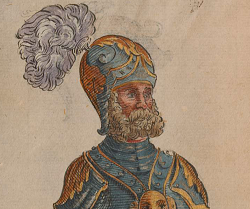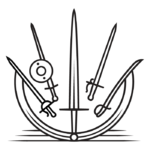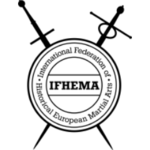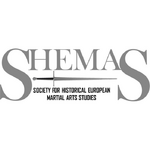|
|
You are not currently logged in. Are you accessing the unsecure (http) portal? Click here to switch to the secure portal. |
Difference between revisions of "Main Page"
| Line 104: | Line 104: | ||
Mair lead a lavish lifestyle and maintained his political influence with expensive parties and other entertainments for the burghers and city officials of Augsburg. Despite his personal wealth and ample income, Mair spent decades living far beyond his means and taking money from the Augsburg city coffers to cover his expenses. This embezzlement was not discovered until 1579, when a disgruntled assistant reported him to the Augsburg City Council and provoked an audit of his books. Mair was arrested and tried for his crimes, and hanged as a thief at the age of 62. | Mair lead a lavish lifestyle and maintained his political influence with expensive parties and other entertainments for the burghers and city officials of Augsburg. Despite his personal wealth and ample income, Mair spent decades living far beyond his means and taking money from the Augsburg city coffers to cover his expenses. This embezzlement was not discovered until 1579, when a disgruntled assistant reported him to the Augsburg City Council and provoked an audit of his books. Mair was arrested and tried for his crimes, and hanged as a thief at the age of 62. | ||
| − | While Mair is not known to have ever certified as a fencing master, he was an avid collector of fencing manuals and other literature on military history, and some portion of his embezzlement was used to fund this hobby. Perhaps most significant of all of his acquisitions was the partially-completed manual of [[Antonius Rast]], a Master of the Longsword and one-time captain of the [[Marxbrüder]] fencing guild. The venerable master died in 1549 without completing it, and Mair ultimately was able to produce the [[Rast Fechtbuch (Reichsstadt "Schätze" Nr. 82)|Reichsstadt "Schätze" Nr. 82]] based on his notes. In sum, he purchased over a dozen fencing manuscripts over the course of his life, many of them from fellow collector [[ | + | While Mair is not known to have ever certified as a fencing master, he was an avid collector of fencing manuals and other literature on military history, and some portion of his embezzlement was used to fund this hobby. Perhaps most significant of all of his acquisitions was the partially-completed manual of [[Antonius Rast]], a Master of the Longsword and one-time captain of the [[Marxbrüder]] fencing guild. The venerable master died in 1549 without completing it, and Mair ultimately was able to produce the [[Rast Fechtbuch (Reichsstadt "Schätze" Nr. 82)|Reichsstadt "Schätze" Nr. 82]] based on his notes. In sum, he purchased over a dozen fencing manuscripts over the course of his life, many of them from fellow collector [[Lienhart Sollinger]] (a [[Freifechter]] who lived in Augsburg for many years). After Mair's death, this collection was sold at auction as part of an attempt to recoup some of the funds Mair had appropriated. |
Already in Mair's lifetime some of his people's Medieval martial arts were being forgotten; this was tragic to Mair, who viewed the arts of fencing as a civilizing and character-building influence on men. In order to preserve as much of the art as possible, Mair commissioned a massive fencing compendium titled ''Opus Amplissimum de Arte Athletica'' ("The Greatest Work on the Athletic Arts"), and in it he compiled all of the fencing lore that he could access. He retained famed Augsburg painter [[Jörg Breu|Jörg Breu the Younger]] to create the art for the text, and according to Hils Mair also hired two fencing masters to pose for the illustrations.{{cn}} This project was extraordinarily expensive and took at least four years to complete. Ultimately, three copies of the massive fencing manual—six volumes in all—were produced, the first entirely in [[Early New High German]], another entirely in [[New Latin]], and a third including both languages. | Already in Mair's lifetime some of his people's Medieval martial arts were being forgotten; this was tragic to Mair, who viewed the arts of fencing as a civilizing and character-building influence on men. In order to preserve as much of the art as possible, Mair commissioned a massive fencing compendium titled ''Opus Amplissimum de Arte Athletica'' ("The Greatest Work on the Athletic Arts"), and in it he compiled all of the fencing lore that he could access. He retained famed Augsburg painter [[Jörg Breu|Jörg Breu the Younger]] to create the art for the text, and according to Hils Mair also hired two fencing masters to pose for the illustrations.{{cn}} This project was extraordinarily expensive and took at least four years to complete. Ultimately, three copies of the massive fencing manual—six volumes in all—were produced, the first entirely in [[Early New High German]], another entirely in [[New Latin]], and a third including both languages. | ||
Revision as of 01:17, 23 February 2014
Welcome to the Wiktenauer!The world's largest library of Historical European Martial Arts books and manuscripts |
Without books no one can be a good teacher nor even a good student of this art. ~ Master Fiore de'i Liberi, ca. 1405 |
Wiktenauer's mission is to collect all of the primary and secondary source literature that makes up the text of historical European martial arts research and to organize and present it in a scholarly but accessible format. The Wiktenauer project is began as a project of the Historical European Martial Arts Alliance and is now supported by researchers and practitioners from across the Western martial arts community. It is named for Johannes Liechtenauer, grand master of the oldest known longsword fencing style; his tradition was also the best-documented of the early Modern era, the subject of many dozens of manuscripts and books over a period of more than three centuries. Here are a few basic categories of pages that are being constructed:
- Master Pages host biographical information about each master, as well as the transcription and translation of his complete works. In cases of multiple copies of a master's work, the transcriptions are laid out side-by-side to facilitate the most accurate translation possible. To aid in interpretation, the writings will also be illustrated with images from the masters' work as available. A bibliography at the end of each page lists additional transcriptions, translations, and scans that are available in print. The exemplar for this category of pages is Fiore de'i Liberi. Ultimately, every master in all of the traditions of Western Martial Arts will have a dedicated page.
- Treatise Pages host all relevant data on a book or manuscript, including description, provenance, table of contents (with links to the appropriate master pages), gallery of page scans, and bibliography of additional print resources. The exemplar for manuscripts is the Goliath Fechtbuch, while the exemplar for printed books is Ergrundung Ritterlicher Kunst der Fechterey. Ultimately, every text in the corpus of Historical European Martial Arts literature will have a dedicated page.
- Technique Pages compile all of the relevant information from all of the relevant manuals on a particular technique, including transcriptions, translations, and images. There is also a section at the end of each page where groups may embed videos of their interpretations. The template for techniques is the Zornhaw. Ultimately, every technique mentioned in the manuals will have a dedicated page.
- Weapon Pages provide information about how a specific weapon form is described and used in the treatises, data on surviving artifacts, an overview of archaeological research pertinent to a given weapon, and a comprehensive index of the treatises and writers that discuss each weapon.
The wiki also features pages for HEMA groups, pages for HEMA events, general information pages, and almost other topic of interest to the HEMA community you can think of. If you'd like to pitch in, simply request an account and consult How can I help?
|
| ||||||||||||||||||||||||||||||||||||
Wiktenauer parent organizations
| Historical European Martial Arts (HEMA) Alliance
Wiktenauer's parent, a US educational non-profit which provides a range of programs and services for its members and affiliate schools and clubs, as well as serving the wider HEMA community. |
| International Federation of Historical European Martial Arts (IFHEMA)
An umbrella organization of national HEMA federations which facilitates international cooperation between members and protects the identity of HEMA as a combat sport on the international stage. |
| Society for Historical European Martial Arts Study (SHEMAS)
A learned society promoting and supporting research in Historical European Martial Arts Studies. It involves researchers and practitioners alike. (Currently innactive.) |
Historical European Martial Arts Federations
| Australia Western Martial Academies of Australia |
| Austria Österreichischer Fachverband für Historisches Fechten |
| Belgium Societas Belgarum Scientiae Nobilis |
| Brazil Associação Brasileira de Artes Marciais Históricas Européias |
| Czech Republic Česká asociace šermířů |
| France Fédération Française des Arts Martiaux Historiques Européens |
| Galicia (Spain) Asociación Galega de Esgrima Antiga |
| Germany Deutscher Dachverband Historischer Fechter |
| Greece Ελληνική Ομοσπονδία |
| Hungary Magyar Hosszúkardvívó Sportszövetség |
| Italy Vnione Arti Dimicatorie Italia |
| Netherlands H.E.M.A.-bond Nederland |
| Poland Polska Federacja Dawnych Europejksich Sztuk Walki |
| Portugal Federação Portuguesa de Esgrima Histórica |
| Slovenia Historical European Martial Arts Federation of Slovenia |
 |
Spain Asociación Española de Esgrima Antigua Federación Española de Esgrima Histórica |
| Sweden Svenska HEMA-förbundet |
| Switzerland Swiss Federation for Historical European Martial Arts |
| United Kingdom British Federation for Historical Swordplay |






















